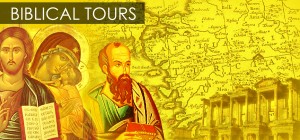Istanbul holds an unsurpassed concentration of places of religious interest and importance. From sites touched by mythology, to the world’s masterpieces of St. Sophia and the Mosque of Suleiman the Magnificent, to such a simple demonstration as the sign in Ortakoy that celebrates the community of Jews, Christians and Muslims living in harmony together, Istanbul has always been an intermediary.
Greater Istanbul bridges the continents of Europa and Asia. It includes the old city within 5th century walls and then in increasingly wider perimeters Karakoy, Beyoglu, both shores of the Bosphorus, Uskudar, Kadikoy ( Chalcedon ), and beyond taking in the European and Asian shores of the Sea of Marmara and the Princes’ Islands. The first written records about the Bosphorus speak of a leader named Byzas and his followers who had come in 667 BC from Megara to occupy the thumb of land, now called Seraglio Point. Descentans of these Byzantines and later colonists from Rome honored their emperor by changing the city’s name to Constantinople in AD 330. From that time on for 1100 years ( except for the brief Latin Occupation from 1204 to 1261 ), it was the capital of the Eastern Roman Empire and an exemplar of civilization to the Western world. Conquered by the Muslim Turkish Sultan Mehmet II in 1453, the city became the capital of the Ottoman Empire, a position it held until the Turkish Republic was proclaimed in 1923 and the capital was moved to Ankara. While its political situation is changed, Istanbul continues to influence the whole country.
Christian Sites In Istanbul : At the end of the First Ecumenical Council in Nicaea ( 325 ), Constantine ordered a delegation of bishops to accompany him to the town of Byzantium. This was the place that he had picked for his new capital, after having considered and rejected Alexandria Troas among other locations. St. Irene ( Divine Peace ) is important in Christian history as the setting of the meetings of the Second Ecumenical Council in 381.
Unlike the other Byzantine churches in Istanbul, St. Irene was never converted into a mosque. For years under the Ottoman Empire it was first an arsenal and then a military museum. Now some of the classical music concerts of the yearly Istanbul International Festival are held here. For both Christians and Muslims, St. Sophia is holy ground. The name, St. Sophia, means Holy Wisdom. When Sultan Mehmet II took the city in 1453 this symbol of profound knowledge and sovereignty became the prime mosque of his capital. Recognizing its historic and universal importance, the Turkish goverment made it a public museum in 1935. St. Sophia was built in Constantinople by the Emporer Justinian between 532 and 537. Over a hundred churches, Catholic, Orthodox, Protestant, serving many different language communities, have active congregations in Istanbul.
Chalcedon – Kadikoy (Istanbul)
Kadikoy, on the Asiatic shore and across the Bosphorus from what was once Byzantium and is now European Istanbul, claims in legend to be older than Byzantium. The Church of St. Euphemia ( probably located somewhere near the crossroads of Alti Yol ) was the location on the Fourth Ecumenical Council ( The Council of Chalcedon ) in 451. This Council brought the decision against the Monophysites which divided the Armenian and Syrian Orthodox churches from the Latin ( Roman ) Catholic and Eastern ( Greek ) Orthodox. Present day Kadikoy is a bustling metropolis with an almost carnival atmosphere among its residents.
Nicea – Iznik
Nicea was the venue for the first and the last Ecumenical Councils, meetings of representatives of all Christian churches. Lysimachus named the town he had just taken in 316 BC for his wife Nikaia. Walls thst were stormed by Arabs, Crusaders, Byzantines and Ottomans, By Tamerlane, and lastly by the Greeks in the 20th century still enclose most of the present town. At the main crossroads of Iznik is the Museum of St Sophia. This is the building in which the Seventh – and last – Ecumenical Council was held in 789. The first Ecumenical Council was held in Nicaea in 325. That First Ecumenical Council took place in Constantine’s palace on the shore of the lake. Stones from this palace can be seen submerged in the water on the southwest corner of the city, but it is hard hard to make out any shape to the building. In the 16th century ceramists in Iznik created the most beautiful tiles ever made in Turkey. In addition to the clarity of their colors and the artistic composition of the designs, the tiles are distinguished by a particular tomato red. Only the tiles produced in Iznik between 1560 and 1620 have this red. These tiles decorate the walls of the Topkapi Palace, a number of Istanbul mosques and the Selimiye Mosque in Edirne.
The Nicean Creed (” I believe in God, the Father Almighty…” ) which is recited by many Christiand as their belief, was first formulated by the bishops in Nicaes in AD 325.

